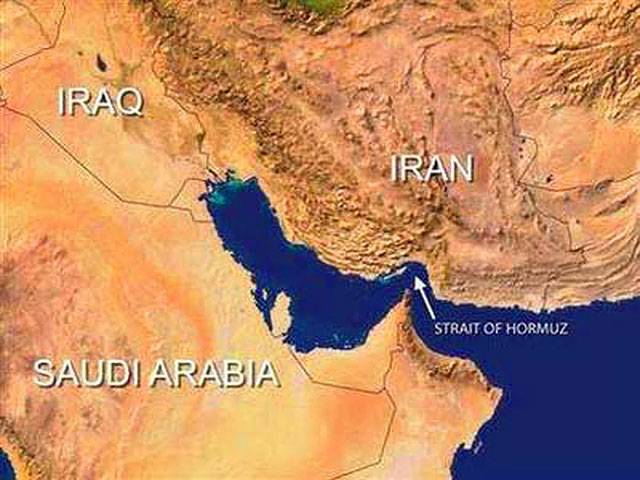A narrow stretch of water separating Iran from Oman and the United Arab Emirates (UAE), the strait is the sole maritime link between the oil-rich Persian Gulf region and the rest of the world. A striking percentage of the oil produced by Iran, Iraq, Kuwait, Qatar, Saudi Arabia, and the UAE is carried by tanker through this passageway on a daily basis, making it (in the words of the Department of Energy) “the world’s most important oil chokepoint.” Some analysts believe that any sustained blockage in the strait could trigger a 50% increase in the price of oil and trigger a full-scale global recession or depression. American leaders have long viewed the Strait as a strategic fixture in their global plans that must be defended at any cost. It was an outlook first voiced by President Jimmy Carter in January 1980, on the heels of the Soviet invasion and occupation of Afghanistan which had, he told Congress, “brought Soviet military forces to within 300 miles of the Indian Ocean and close to the Strait of Hormuz, a waterway through which most of the world’s oil must flow.” The American response, he insisted, must be unequivocal: any attempt by a hostile power to block the waterway would henceforth be viewed as “an assault on the vital interests of the United States of America,” and “repelled by any means necessary, including military force.”
Much has changed in the Gulf region since Carter issued his famous decree, known since as the Carter Doctrine, and established the US Central Command (CENTCOM) to guard the Strait — but not Washington’s determination to ensure the unhindered flow of oil there. Indeed, President Obama has made it clear that, even if CENTCOM ground forces were to leave Afghanistan, as they have Iraq, there would be no reduction in the command’s air and naval presence in the greater Gulf area.
It is conceivable that the Iranians will put Washington’s capabilities to the test. On December 27th, Iran’s first vice president Mohammad-Reza Rahimi said, “If [the Americans] impose sanctions on Iran’s oil exports, then even one drop of oil cannot flow from the Strait of Hormuz.” Similar statements have since been made by other senior officials (and contradicted as well by yet others). In addition, the Iranians recently conducted elaborate naval exercises in the Arabian Sea near the eastern mouth of the strait, and more such manoeuvres are said to be forthcoming. At the same time, the commanding general of Iran’s army suggested that the USS John C. Stennis, an American aircraft carrier just leaving the Gulf, should not return. “The Islamic Republic of Iran,” he added ominously, “will not repeat its warning.”
Might the Iranians actually block the strait? Many analysts believe that the statements by Rahimi and his colleagues are bluster and bluff meant to rattle Western leaders, send oil prices higher, and win future concessions if negotiations ever recommence over their country’s nuclear programme. Economic conditions in Iran are, however, becoming more desperate, and it is always possible that the country’s hard-pressed hardline leaders may feel the urge to take some dramatic action, even if it invites a powerful US counterstrike. Whatever the case, the Strait of Hormuz will remain a focus of international attention in 2012, with global oil prices closely following the rise and fall of tensions there.
Friday, April 19, 2024
The Strait of Hormuz

8:27 AM | April 19, 2024
8:09 AM | April 19, 2024
IMF urges Italy, France to spend less, Germany to loosen purse strings
8:57 PM | April 19, 2024
PM calls UAE president, admires Emirati leadership's response to recent Dubai rains
8:55 PM | April 19, 2024
Church leader calls for including Christians in Gandhara Corridor
8:50 PM | April 19, 2024
Empowering Women: The Vision of Maryam Nawaz Sharif
8:37 PM | April 19, 2024
President Zardari confers Nishan-i-Imtiaz (M) award on Turkish CGS
8:23 PM | April 19, 2024
A Tense Neighbourhood
April 19, 2024
Dubai Underwater
April 19, 2024
X Debate Continues
April 19, 2024
Hepatitis Challenge
April 18, 2024
IMF Predictions
April 18, 2024
Kite tragedy
April 19, 2024
Discipline dilemma
April 19, 2024
Urgent plea
April 19, 2024
Justice denied
April 18, 2024
AI dilemmas unveiled
April 18, 2024
ePaper - Nawaiwaqt
Advertisement
Nawaiwaqt Group | Copyright © 2024





